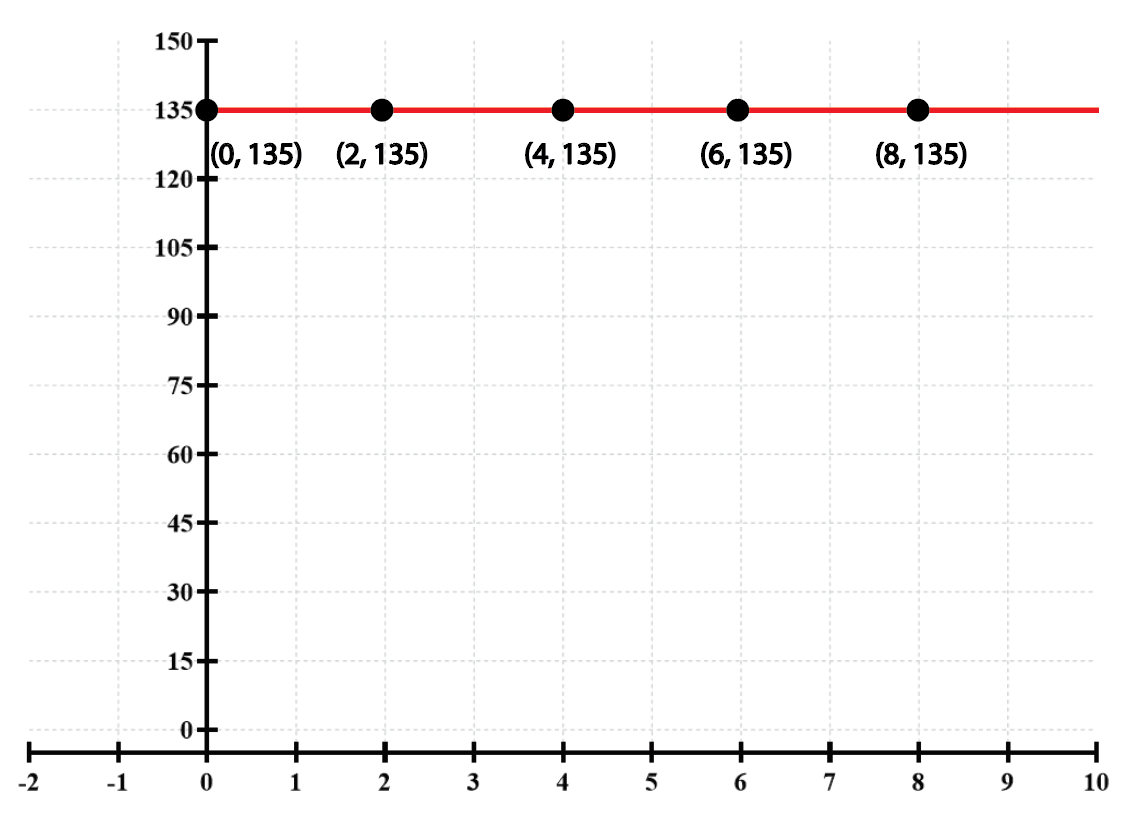Here are the essential concepts you must grasp in order to answer the question correctly.
Average Rate of Change
The average rate of change of a function over an interval is calculated as the change in the function's value divided by the change in the input value. Mathematically, it is expressed as (f(b) - f(a)) / (b - a), where [a, b] is the interval. This concept helps in understanding how a function behaves over a specific range.
Recommended video:
Horizontal Line
A horizontal line on a graph indicates that the value of the function remains constant regardless of changes in the input variable. In this case, the line at y=135 shows that for all x-values, the output is consistently 135, demonstrating no change in value, which directly affects the average rate of change.
Recommended video:
Graph Interpretation
Interpreting a graph involves analyzing its features, such as slopes, intercepts, and overall shape, to understand the relationship between variables. In this question, recognizing that the graph is a horizontal line allows for the conclusion that the average rate of change is zero, as there is no vertical change across the specified x-values.
Recommended video:
Graphs and Coordinates - Example

 Verified step by step guidance
Verified step by step guidance Verified video answer for a similar problem:
Verified video answer for a similar problem:

